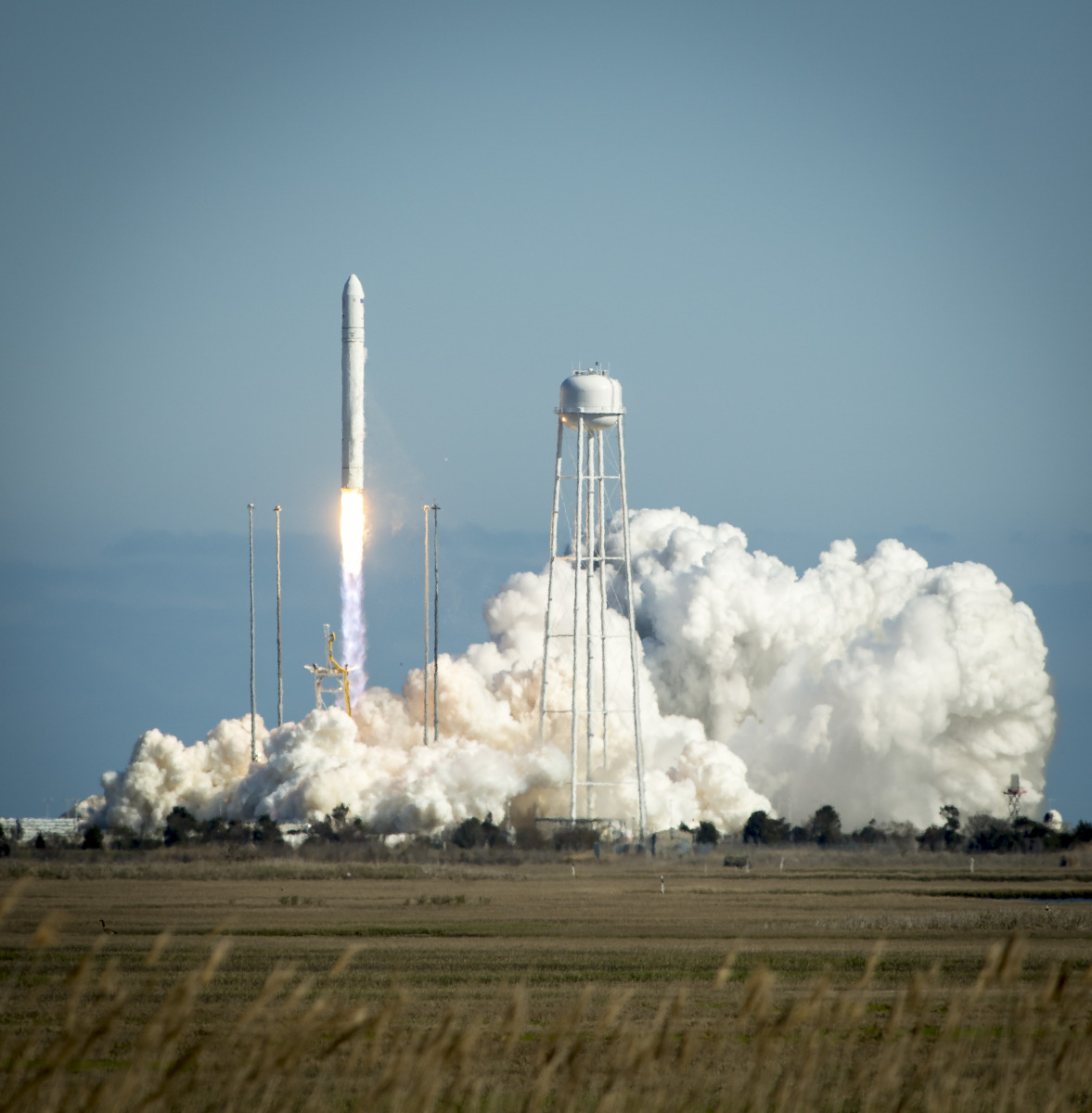Are we contaminating space?
Interview with
This week a warning came from researchers in Switzerland who showed that  DNA on the outside of a sounding rocket - an unmanned craft sent up into space for research - could survive intact even under the extreme conditions beyond our planet.
DNA on the outside of a sounding rocket - an unmanned craft sent up into space for research - could survive intact even under the extreme conditions beyond our planet.
That means teams studying the origins of life in the solar system and beyond need to be careful not to contaminate what might be out there with DNA from Earth. Kat Arney caught up with Professor Mark Sephton from Imperial College, who also works on organic molecules in space, to get his views on this new study...
Mark - What the scientists have done is that they've put DNA on the outside and inside of a sounding rocket, shot it out in space and then collected it when it arrive back on Earth. What they're trying to do is work out how organisms survive space travel.
Kat - What have they found with this DNA that they've tested?
Mark - Well, they did two clever things. They took the DNA and they modified it so that it was fluorescent. But also, so that it had anti-bacterial properties. Once they got this material back on Earth, they could then test it out to see if it's still functioned. So, you can imagine if you send an organism into space, is it going to live when it gets back? And so, that was the idea. About 35% of this material actually retained its fluorescence and anti-bacterial properties. So, the DNA survived.
Kat - This seems quite impressive to me because you don't really think of something like that surviving in the conditions of space.
Mark - It's quite impressive that this stuff was raised to temperatures well above 100 degrees C and they still managed to make it work when it came back down. So, these things are tougher than we think.
Kat - What are the implications do you think for the kind of things that we're doing? For example, we've just heard about the Rosetta mission, going off to a comet, we're sending all kinds of probes to explore places outside our Earth.
Mark - Well, Rosetta of course, one of the things was to look at the start of materials of life in a comet. Of course, you can't do that very well if you're actually taking the materials of life with you and Rosetta and every other spacecraft is built by human beings. What this work does tell you is something about how terrestrial contamination can survive space travel. So, when we send a probe to Mars or to a comet, we've got to be very, very certain that it's extremely clean before it goes because the evidence is increasingly telling us that our bugs or our DNA or the materials that we're made of when they're attached to these spacecraft components can actually survive reasonably well.
Kat - What would be the risks of taking DNA from our planet and seeding it onto other worlds?
Mark - I suppose DNA is not too bad because it would have to find a host. It would have to find a home to live in. But if you take whole organisms then obviously, if they find nice conditions, they can proliferate. And you could think that it's not bad for the environment. What it does do though scientifically is, it destroys the opportunity to learn where life may be distributed in the present in the Solar System where life may have originated and how of course, human beings may eventually have been generated from this whole evolutionary sequence. So, when we go out into the Solar System, we've got to be very careful not to contaminate these forensic records that may help us understand how life originated say, 3 billion years ago.
Kat - So, if you find evidence of human DNA on Mars, it might have come from us in the first place.
Mark - There's always contamination. You've got to be really certain that you're not detecting yourself. That would be a terrible thing to go all the way to Mars, spend large amounts of money, and then just detect someone's fingerprints on the Martian surface.
- Previous The mosquito genome
- Next UK mission to the Moon to be crowdfunded










Comments
Add a comment